India is a country of many religions. The predominant religion is Hinduism, which is the faith of about 80% of Indians. Because the Mughals (Muslims) ruled most of India for about 300 years, beginning in 1526, there is a large Muslim minority. Other Indians are Buddhists (a religion that began in India but never really took hold there), Sikhs, Jains, and a handful of Jews and Christians. We visited temples of all of them except Jews and Christians--after all, this trip is called Mystical India.
|
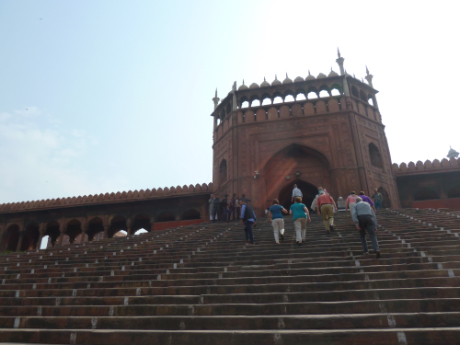 |
 |
| Our first visit was to Jama Masjid, a huge mosque in Delhi. Chuck took one look at the stairs and groaned, but he soldiered on. |
In many mosques the women are asked to cover their heads; Pat carries a scarf for the purpose. This was the first one we had been in that asked the women to cover their clothing (no matter how modestly dressed we were), but not our heads.
|
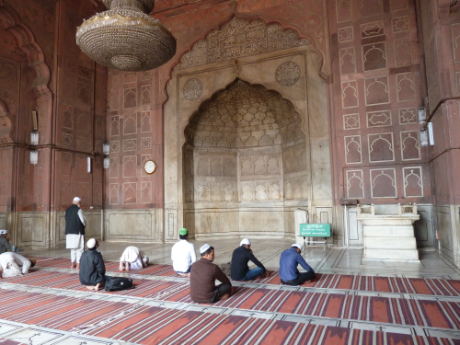 |
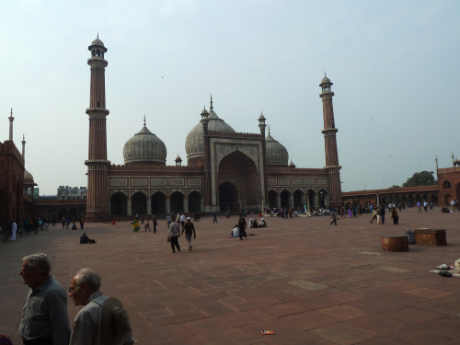 |
| Even in the middle of a week day morning there were men praying at the mosque. |
This is the largest mosque in India and one of the largest in the world. It is unroofed, which creates a huge plaza. It can hold up to 85,000 worshippers. When it is not being used for worship it is a place for people of all faiths to congregate.
|
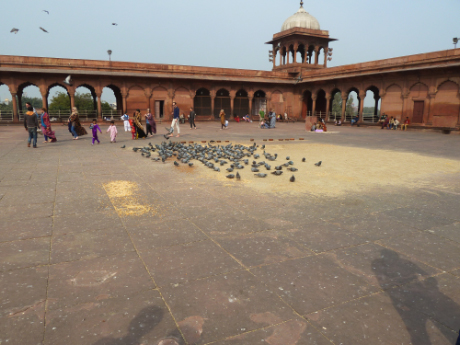 |
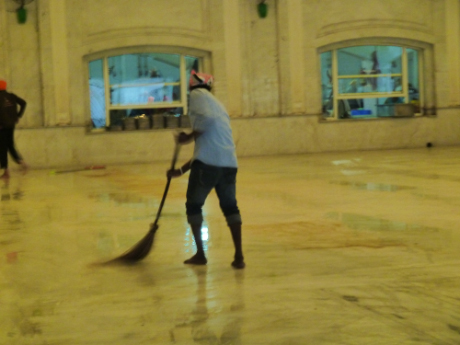 |
| In one corner of the mosque is a bird feeding station, mostly for pigeons. The Indians, no matter what their religion, seem to have a reverence for all animals. |
We also visited a Sikh gurdwara. Sikhs are very community minded and this one serves a communal meal for thousands of people every day in the great hall. Anyone is welcome to come.
|
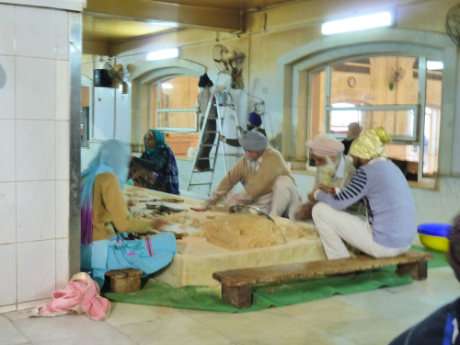 |
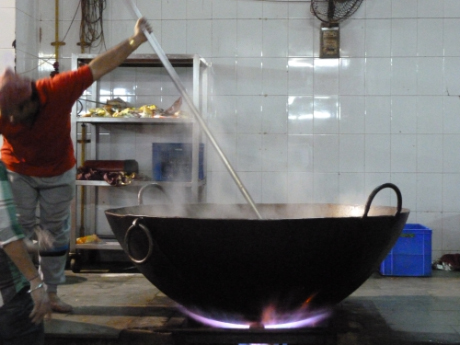 |
Most of the labor is provided by volunteers, many (but not all) of whom are from the Sikh community. Here bread is being prepared (from scratch) for that afternoon's meal.
|
Stew is cooked in huge iron kettles over a gas flame. It was warm, even on a cool day, and must be intensely so in the summer. |
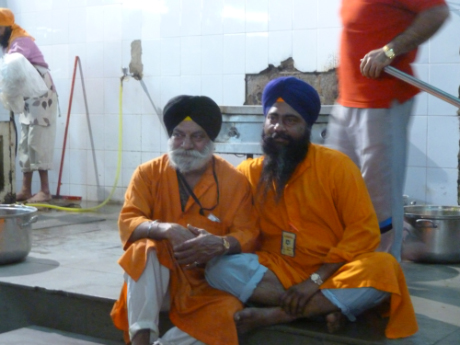 |
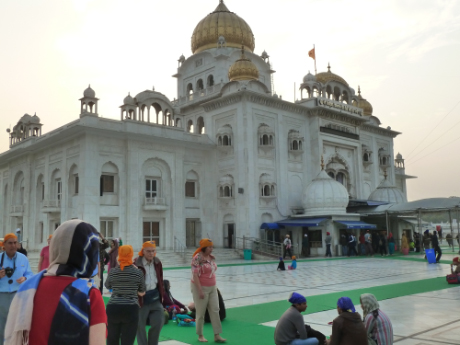 |
| Sikh men are distinguished by their turbans, their long beards (they never cut their hair), and the fact that they are all surnamed Singh. Non-Sikh Indians may, however, share one or more of these characteristics. |
The Sikh sanctuary was a marble temple surrounded by marble terraces. While lovely, it was cold to walk on; you are required to remove your shoes upon entry and walking on marble in socks was too slippery.
|
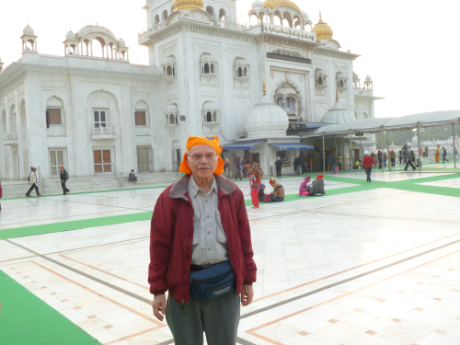 |
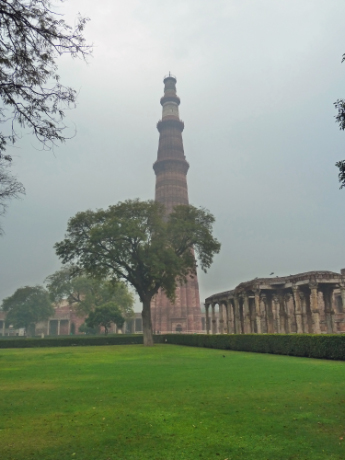 |
At the Sikh temple no one cared what we were wearing (within reason) but everybody (men and women alike) had to cover their heads. The gudwara provided us with truly stylish headcloths.
|
Our next stop was another Muslim site, the Minar. This is the second-highest minar in India and it is in the center of an archaeological complex. |
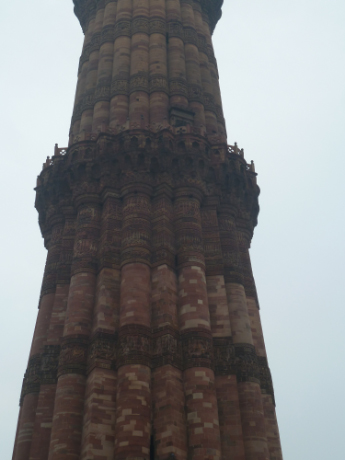 |
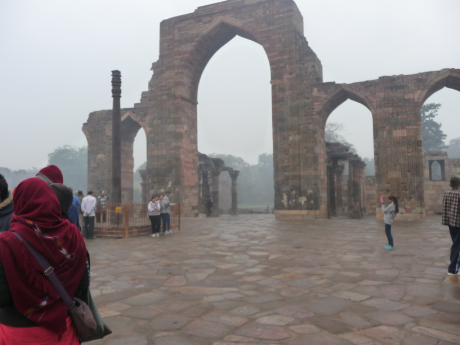 |
The minar is built of red sandstone and marble and is covered with Arabic inscriptions and verses from the Koran. Although it has been damaged by earthquakes and lightning, it remains a monument to 12th century building techniques.
|
The area around the minar contains the remains of a mosque built from the ruins of the Hindu temples that used to surround the area. |
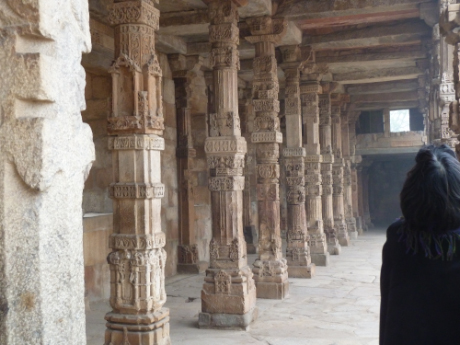 |
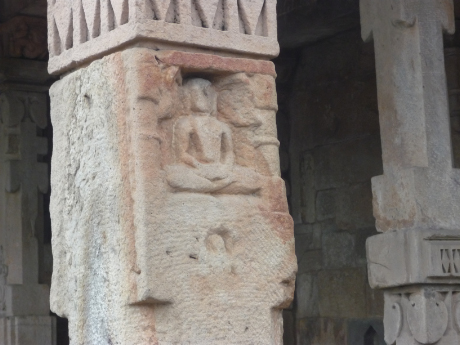 |
This reuse of materials leads to the odd situation of having a mosque built of pieces that are covered in carvings of human and animal figures, despite Islam's ban on such decorations.
|
My favorite was a carving of Buddha that looks straight across the courtyard towards the mosque. Ecumenical indeed. |
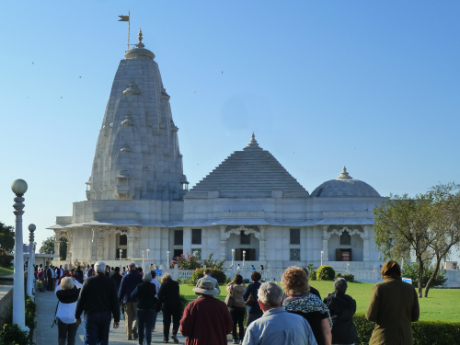 |
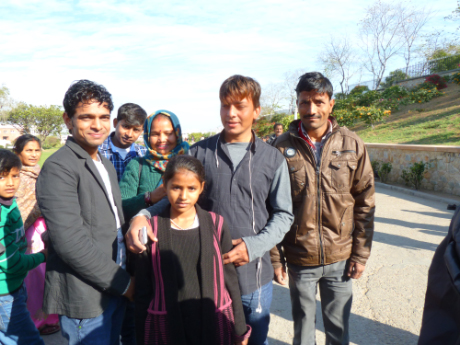 |
| Hindu temples, unfortunately, do not allow non-Hindu visitors, so we could only admire this one from the outside. |
Indians were always delighted to see us. We met this extended family at the Hindu temple and spent quite a while taking photos of each other.
|
 |
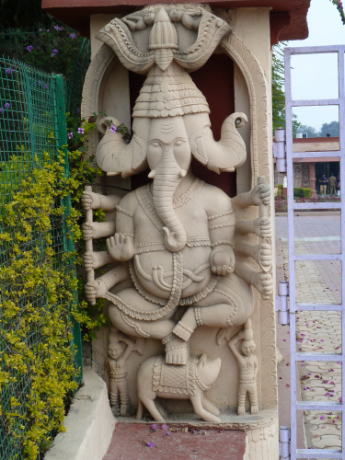 |
In Orchha we stopped for lunch and came upon a large number of these structures. Although they look like temples they are actually cenotaphs built in the 16th century to honor the rulers and now falling into disrepair.
|
Many places that we went had statutes of Ganesha, the elephant-headed god of learning and prosperity. All Hindu gods have an animal that they ride; the elephant god fearlessly rides a mouse.
|
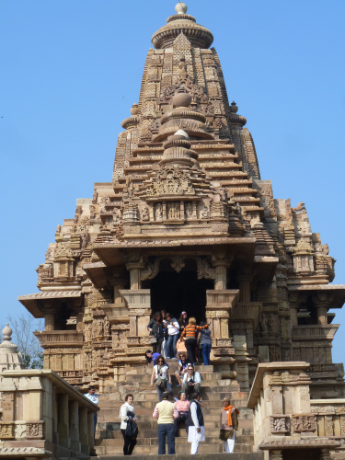 |
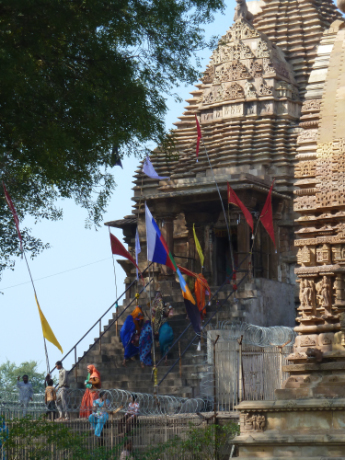 |
At Khajuraho there is a large complex of Hindu temples popularly called the Kama Sutra temples because of the nature of some of the carvings. The Hindus who built these temples (around 950-1100 AD) believed that all aspects of life ought to be studied.
|
Next door to the complex is a functioning Hindu temple into which a parade of colorfully-dressed women were entering, making offerings, and leaving again, just as earlier Hindus would have at the temples we were visiting.
|
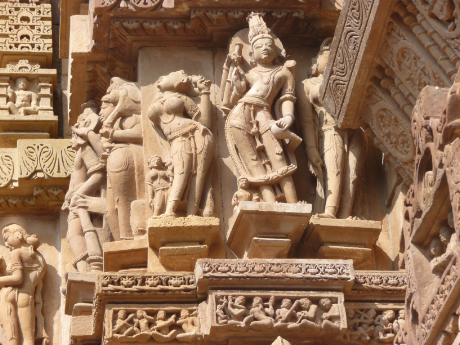 |
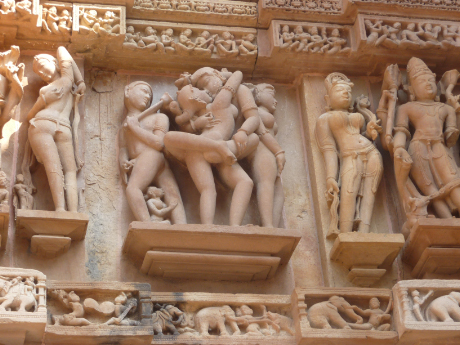 |
The temples in the complex are completely covered in deep relief sculpture. The handling of the human body is masterful, both in the positioning of the bodies and the expressions on the faces. Even the small friezes running below the main figures are wonderfully executed, as are the lacework decorative motifs.
|
 |
 |
| One notable feature of the carvings is that many of them depict everyday scenes such as plowing, pottery making and, as here, a woman with a mirror dressing her hair. The small figure in the rear is a servant. |
Near the Hindu temples is a group of Jain temples. Jainism is considered by many to be the oldest religion in India, dating back to about 500 BC. It is most noted for its absolute reverence for all life. Jain are known to walk around in facemasks and sweep the ground in front of them so as not to harm any insects that might be flying or crawling nearby.
|
 |
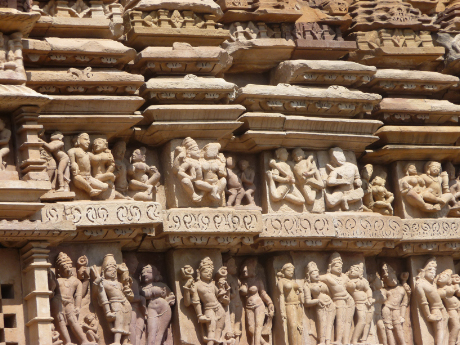 |
It was perhaps fitting that we encountered a family of owls living in the deeper parts of the temple. Jain temples make more use of decorative motifs.
|
However, there are still lots of figure carvings, perhaps not quite as fine as those on the Hindu temples, but still very good indeed. |
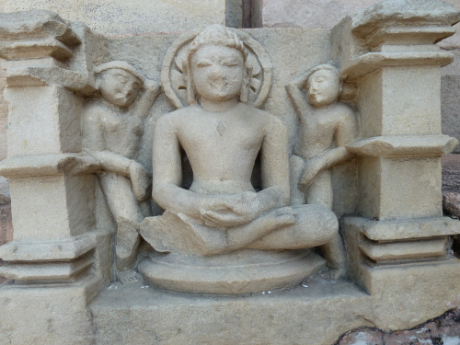 |
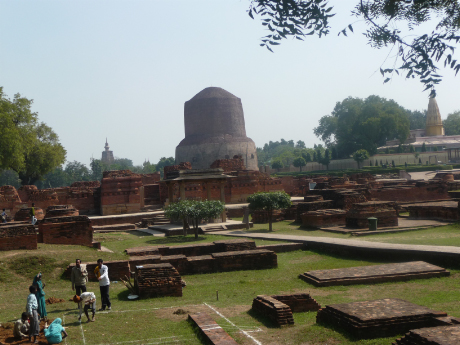 |
| One rather worn carving is of Buddha. In India there are connections among all of the religions. |
We also visited a Buddhist stupa, or sacred mound in Sarnath. This one commemorates the spot at which Buddha is thought to have preached his first sermon.
|
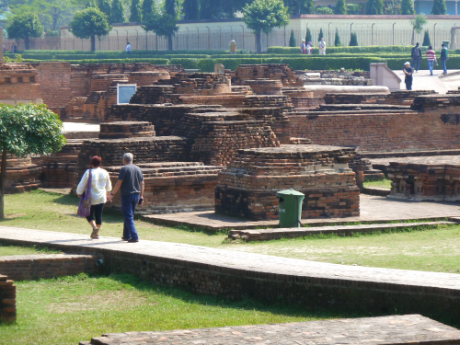 |
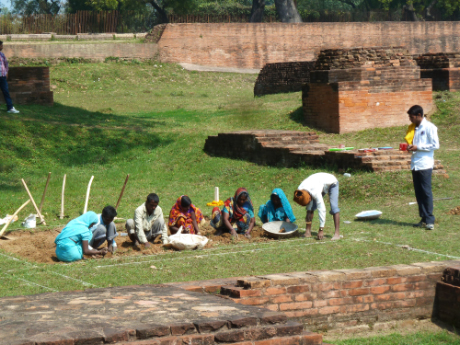 |
| The stupa is surrounded by a large complex of ruined Buddhist monasteries and supporting buildings where one of the earliest community of Buddhist monks lived. |
The site has been under excavation, on and off, since about 1800. The day that we were there it was "on" and Pat was impressed by the number of women archaeologists who were working there.
|
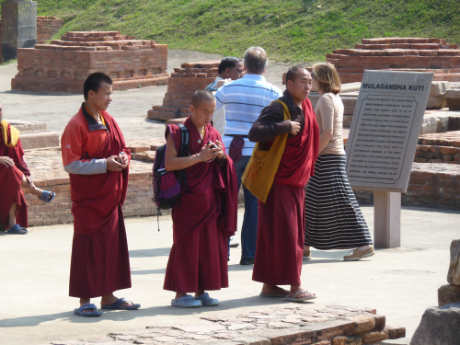 |
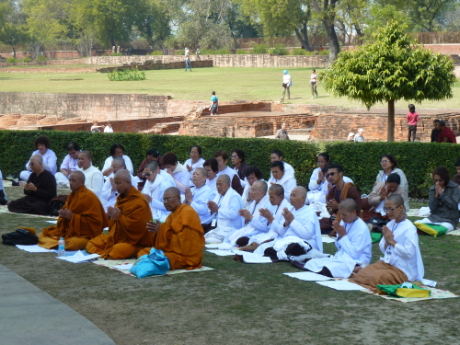 |
| Naturally the site is a magnet for Buddhists monks from all over the world. |
There were also larger groups or worshippers, clearly from a variety of ethnic heritages.
|
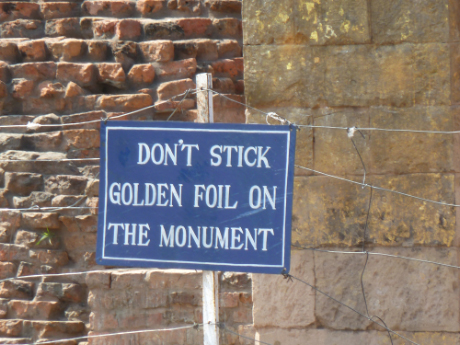 |
|
| But wherever they came from, they were clearly no better at following instructions signs than Americans are. Placing gold on the monument is a sign of respect but it harms the stone and the archaeologists hate it. |
|





































